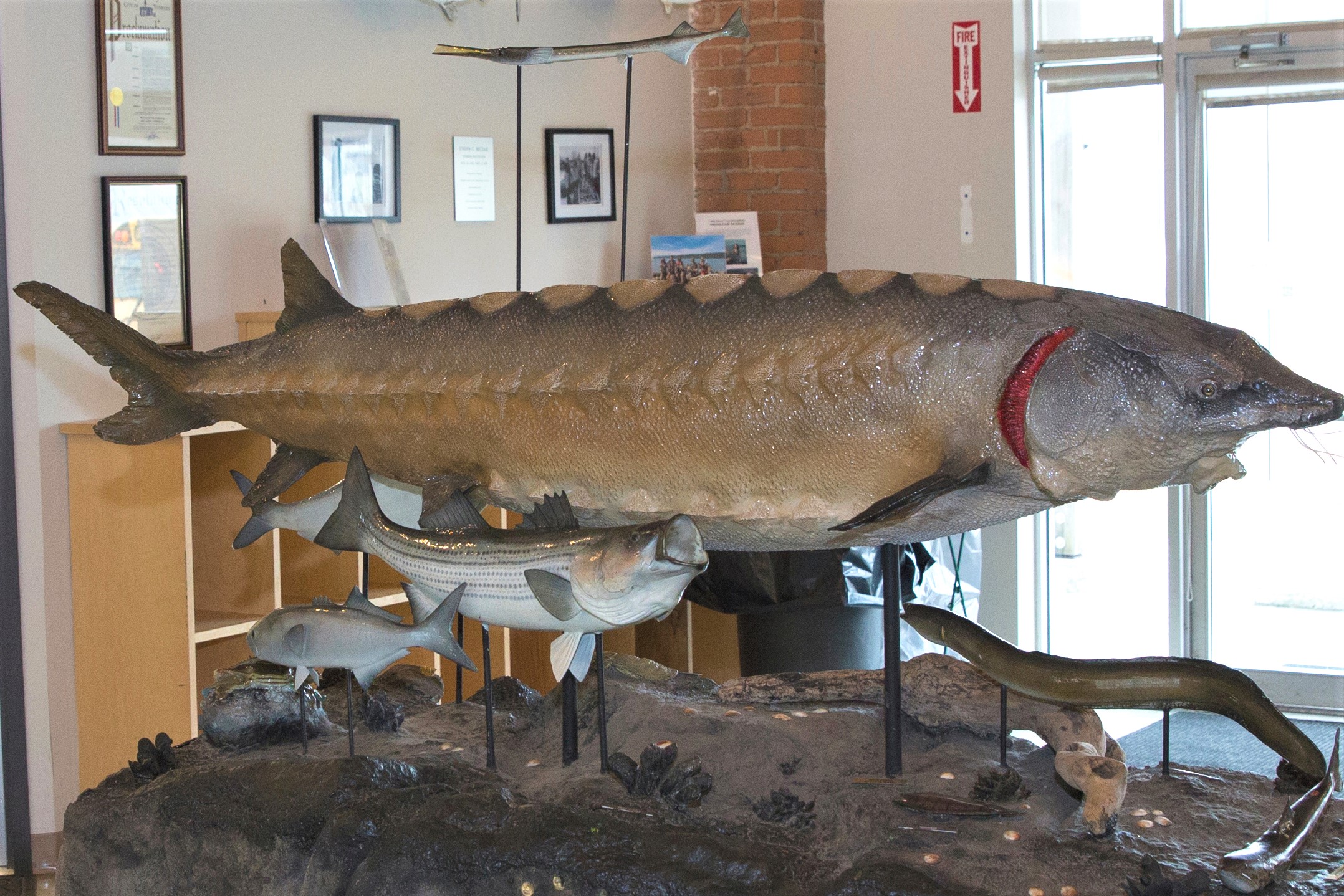Hudson River Animal of the Month: Atlantic Sturgeon

Eli’s Fish Facts: Atlantic sturgeon
Acipenser oxyrinchus
Atlantic sturgeon are some of the most celebrated and elusive fish in the Hudson River. They are anadromous, which means that they spend most of their lives in the ocean, and return to the Hudson River to reproduce and spawn, when females can lay up to two million eggs. Sturgeon have been known to live up to 60 years, and they often don’t reach sexual maturity for at least 12 -14 years for males, and often as many as 18 or 19 years for female sturgeon. Atlantic sturgeon were abundant in the Hudson River until the 1900s, when their population started severely declining largely because of pollution and overfishing (for their meat and caviar, or eggs). Today they are considered an endangered species.
Sturgeon are often described as dinosaur fish, because they have been around as a species for 120 million years! They look like relics from the dinosaur age as well - they can grow up to 14 feet long (though are more commonly between six and eight feet in the Hudson), and are covered in armored plates called scutes, rather than scales. They have a submarine-shaped body, and a long, down-facing snout with whiskers on the bottom. While many people picture sturgeon as fearsome predators, they are actually toothless bottom feeders, sifting through the sediment (mud) at the bottom of the river for invertebrates like crustaceans, worms and bivalves.
We have never caught a sturgeon at CURB, likely because they tend to swim in the middle, or channel, of the River, while we do all of our seining on the shore. However, we occasionally find washed-up scutes on our beach, which are on display to see and touch in our permanent exhibits at CURB.
For more information about the Atlantic sturgeon, please check out the following videos from CURB:
From Eels to Estuaries: Sturgeon in the Hudson (Lesson & Craft)